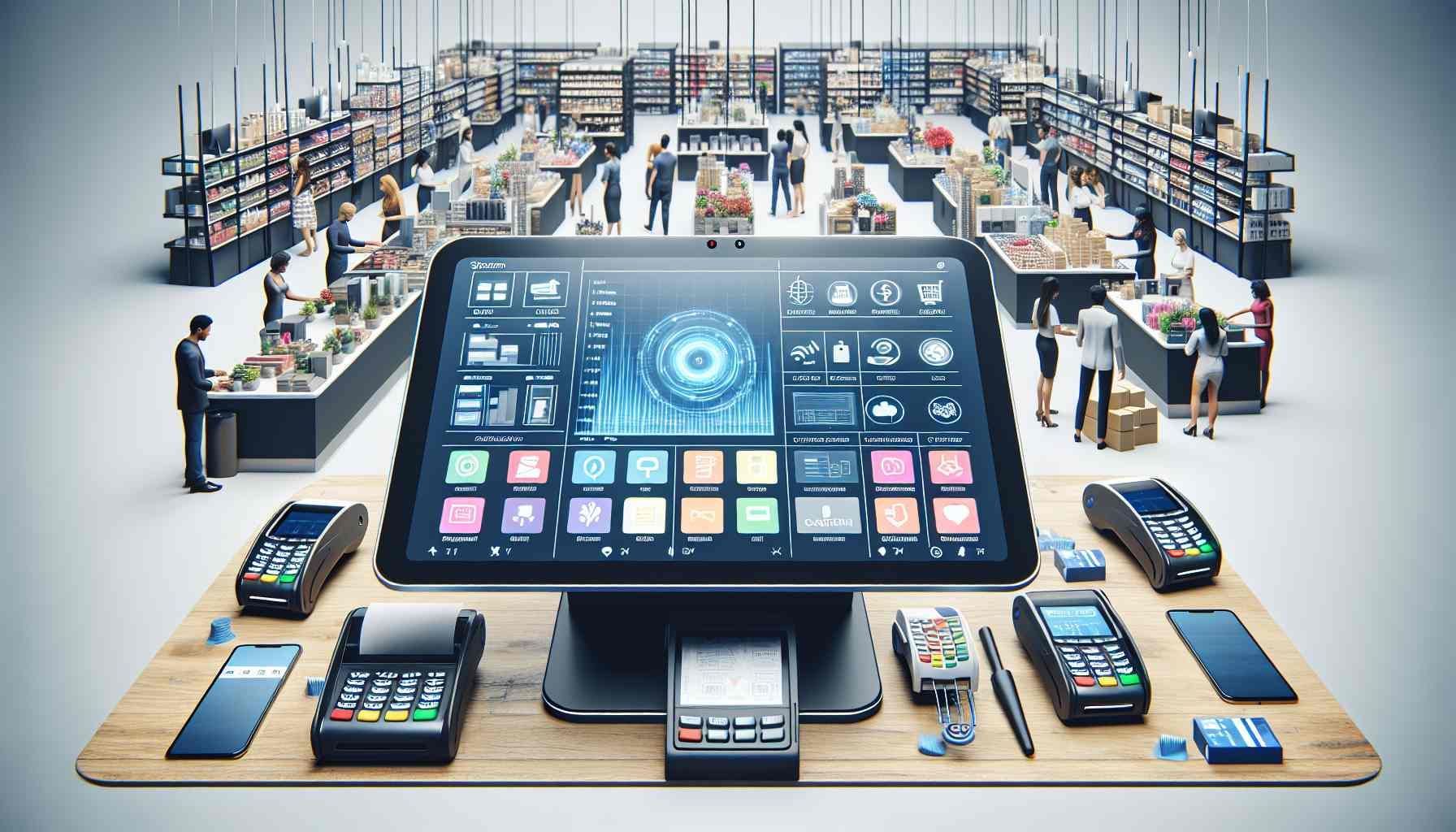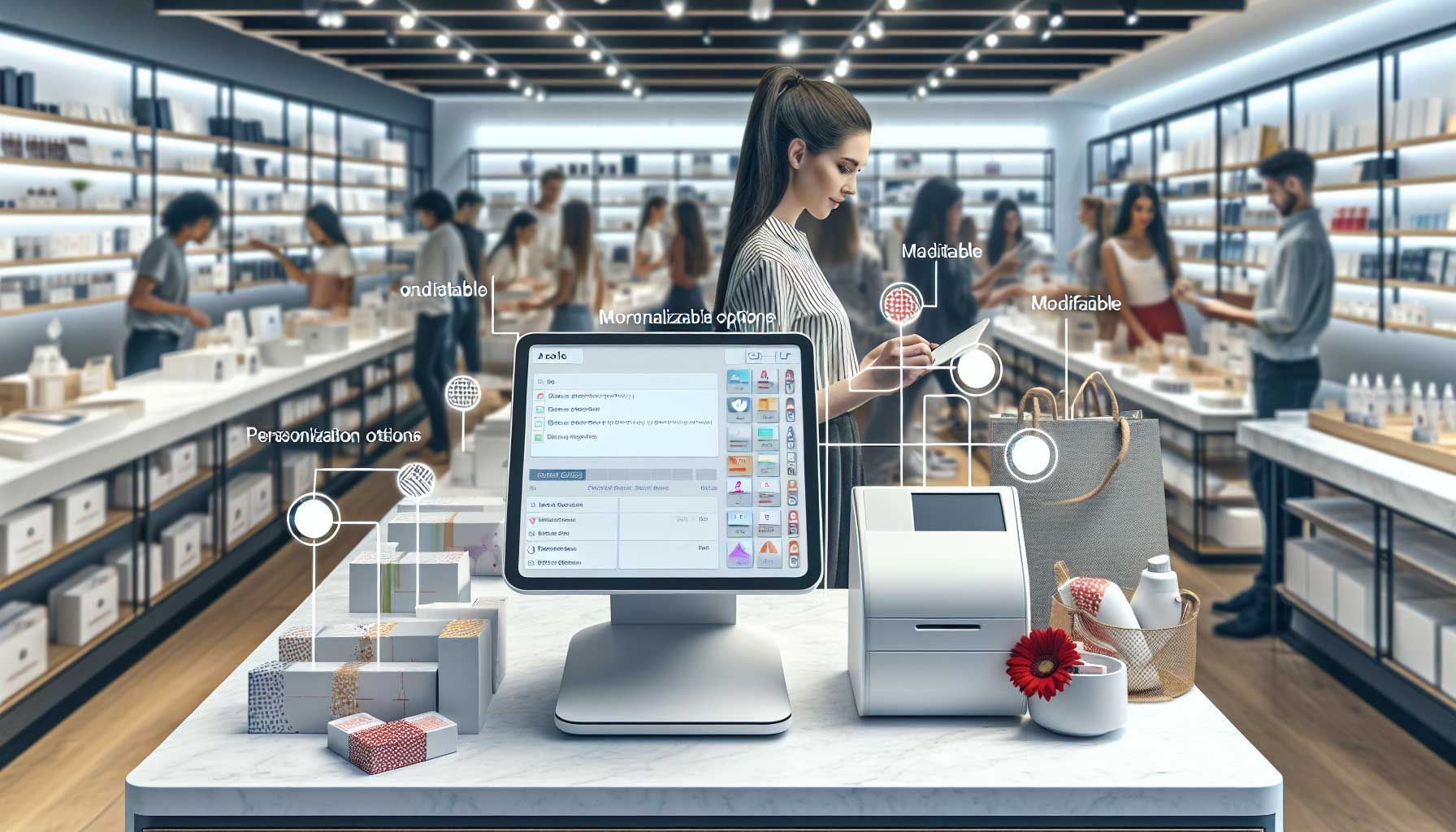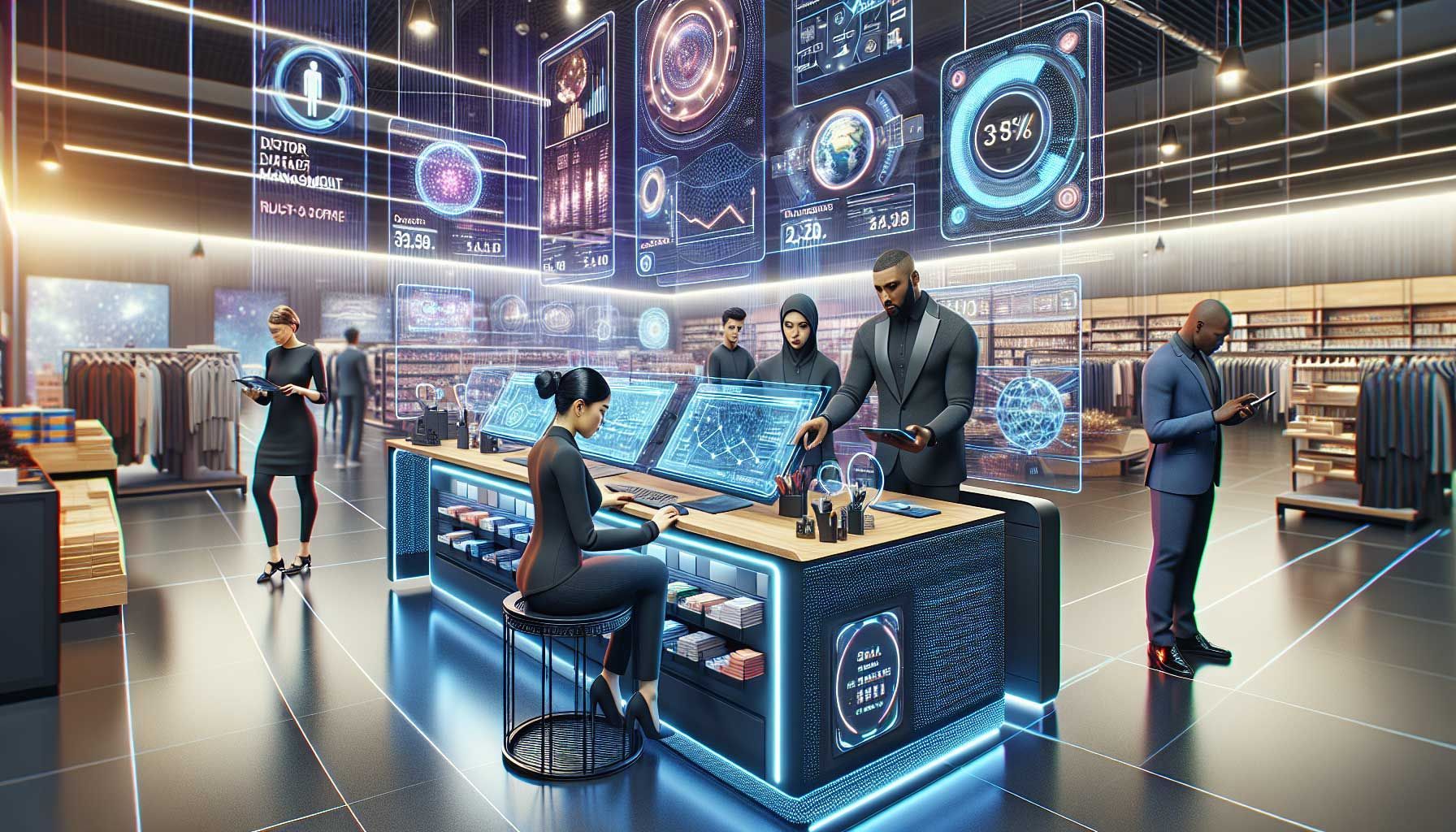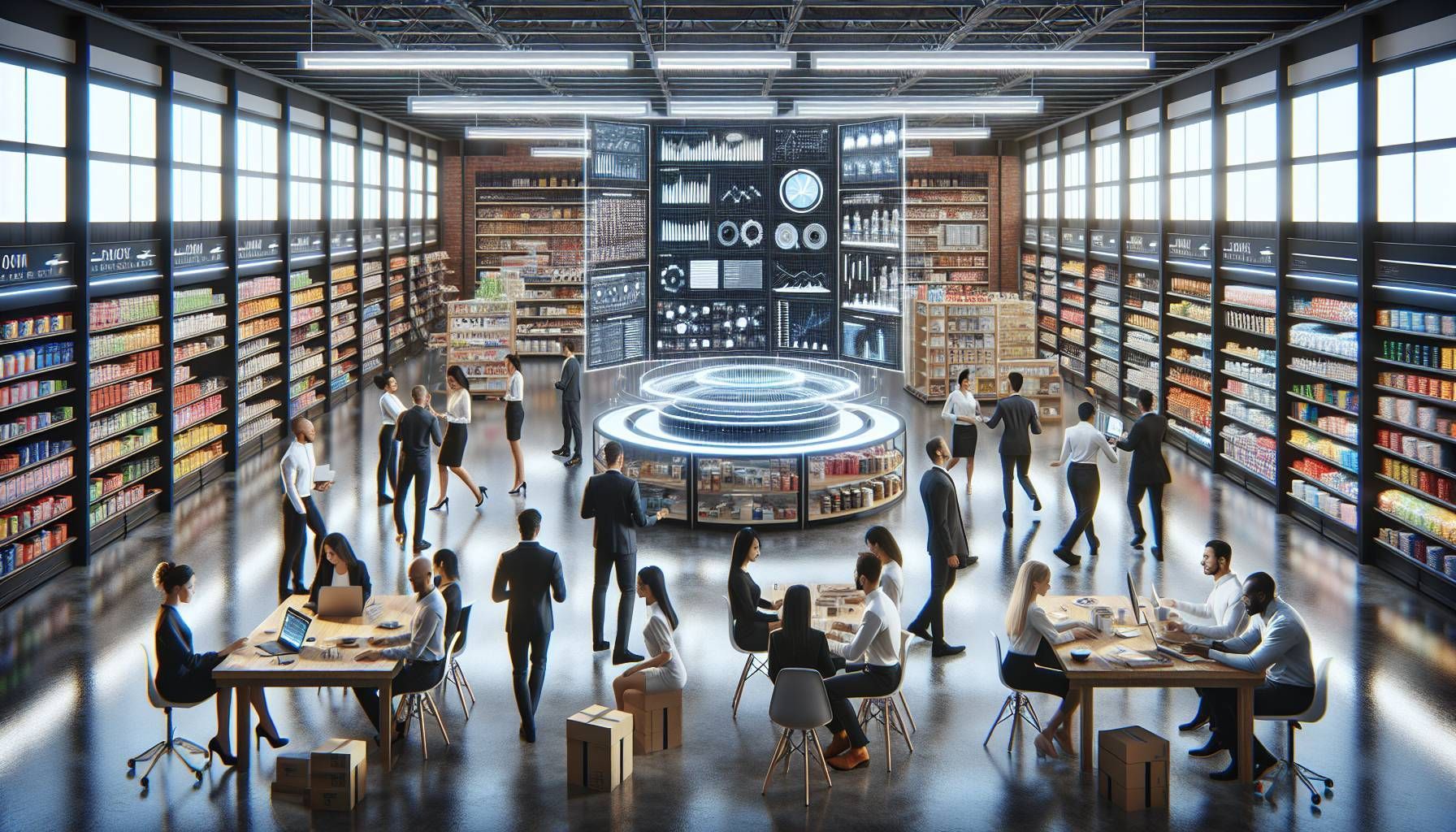Complete Digital Strategy For Your Retail Store With Free Template
The start of a digital strategy for your retail store
Last time I wrote an article about the ‘ Advantages and Disadvantages of a Retail Store VS Online Shopping ’. The bottom line is that if you bring these two worlds together, you can make a difference as a retailer and offer more value than competitors. But how to make this work? Therefore, this time we will look at the complete digital strategy for a retail store to implement . A practical step-by-step plan for store owners on how to make digital transformation in your business.
In this article we cover:
- Definition
- 5 phases to start and implement
- Practical steps for physical stores
- Free template
- Advanced tips when basics are in place
What is the meaning of digital strategy for retail?
The digital strategy for retail is the way a store wants to approach consumers via the online channel and encourage them to buy online or offline. This is successful if the type of product, price, promotion and location of the shop are perfectly aligned with the customer needs. This plan of action is part of the total business operations and is therefore also influenced by the mission and vision of the company.
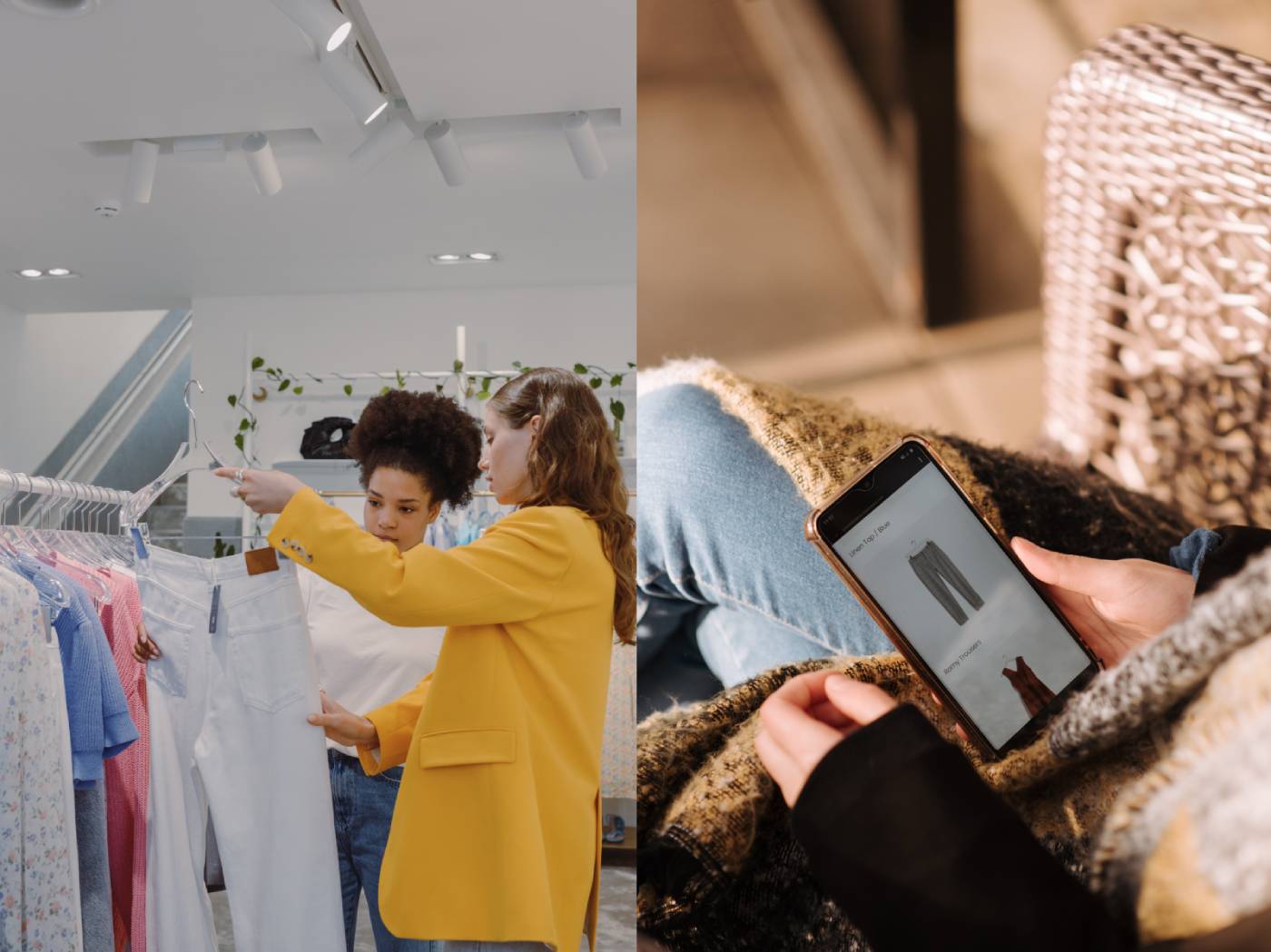
5 Steps to start and implement
We will explain these five steps further. You can also download the free template at the bottom of this page.
- Define your audience
- Understand your business
- Match with the right tools
- Collect data & Measure value
- Make small improvements
We assume that you already have a business (physical store). So, you know what you are selling and in which industry you are active. When you start working with digitization, you quickly discover that there are many possibilities and tools. Everyone recommends something different. My own experience is that you then try everything ‘the experts’ tell you (Social Media, Advertising, Videos, etc.), but that it has little effect despite the energy you put into it.
Therefore, we first need to determine the target group and look at the current business operations before we spend a single dollar. We then choose the right strategy and tools to achieve the objectives and we monitor the results. The digital strategy can then be adjusted accordingly. So let’s get started!

1. Define your audience
First of all, it is important that you determine the right target group in order to determine the digital strategy that suits the retail store. Who would you like to reach? Of course, these are mainly the people who buy from you. But who are they exactly? By collecting and listing this data, you get a better picture of the ideal customer.
Personal Attributes: Age, Social Class, Gender, Interests, Location, Education.
Painpoints: What is their problem, challenge or need? And what are we trying to prevent?
Information need: Where do they look for their information online and who do they trust? By collecting this data, you learn more and more about your customers. If you don’t know much about the target group yet, it doesn’t hurt to keep it a little wider. The most important thing, however, is that you can formulate the right message with this customer information. So don’t say ‘We are here for everyone’. That is no basis for a distinctive and powerful story. You cannot execute a profitable digital strategy for everyone. So try to make a hard choice here. Can’t do this for the entire company? Then start with a specific part of the range and find the perfect target group for that.
2. Understand your business
OK, we have selected the target group we want to approach. Now the next step is to look at your own business. The most important part of this is that we find out what your real benefit is for the potential customer. For this we can ask ourselves 3 questions:
What are the company’s strengths?
Find out what sets the company apart from competitors. As a physical store, this usually includes the aspects of service and local availability. These are of course good points that can match the needs of the customer. However, also try to think of distinguishing points from competition. Especially if there are several shops in the area that sell the same product. For example, ‘the largest range in the region’ or ‘a lot of customization or personalization possible’.
For example, if you sell services, such as a painting company, a distinguishing point is that ‘all assignments can be completed within a week’. Of course the best advantages depends on the customer needs from step 1. Talking about such a company; there are also companies that only paint at night (for example in buildings that are too expensive to close during the day) or companies that only paint from the first floor (and where the customer does the ground floor himself).
What is the communication power of the team?
In step 1 you also tried to find out where the target group is looking for information. Now we are going to discover how your company can be present here. This is part of a good content plan for physical stores. Simply put, it comes down to 4 parts: are you good at writing text, taking photos, making videos or making a podcast (audio)?
Suppose the customer wants to read a lot about the subject and you can write better than you talk? Then a blog might be interesting or ask if you can write columns for a local news website. Are you better at talking and do the customer want to see and explain a lot? How about a podcast or starting a YouTube channel?
How does the product fulfill the customer needs?
Suppose you sell drilling equipment. You are then quickly inclined to think that people want a drill, but that is not the case. People want holes. Therefore make sure that the message is about the solution and less about the properties of the product.
By answering these questions, the perfect message can be formulated that appeals to the target group. This is essential in a successful digital strategy for the physical store.
3. Match with the right tools
We can distinguish 4 online areas on which you can focus as a retailer:
- SEO (Search Engine Optimization)
- Pay per click and Social Media ads
- Content Marketing
- Email Marketing
I would like to briefly explain them with the advantages, disadvantages and possible solutions.
SEO (Seo Engine Optimization)
People also search online when looking for something nearby. That’s why search engines help your business when you’re close to the customer. Therefore, it is interesting for every local company to get started with this. Example: If someone searches for an electrician in Denver, you want to appear at the top of the search engine as an electrician in that city.
+
Good for companies that want to be found locally.
+
Information you publish can last for years.
+
Easier than you think to do it yourself.
–
It may take a while before you see results.
–
If you have this done by a marketing agency, it is quite an investment.
Tip: Compare different providers of these services or try to find a self-employed person if you have a small budget. Also, write the text yourself and have someone else make this SEO suitable and put it on the website. Be critical of the work that is done and watch out for people who promise mountains of gold.
Pay-per-click and Social Media ads
You see a lot of advertisements online. This is interesting to give the company more visibility and people can be approached in a targeted manner. For example, if they have already visited your website.
+ Fast results and helps improve SEO
+ Display personal messages that match customer interests
+ Good for more visibility
– A budget is needed
– Not optimal for the long term (if you stop, you will no longer be visible immediately)
Tip: Look mainly at these possibilities on Social Media and less at the possibilities for search engines or displaying advertisements on other websites. Furthermore, with a small budget it is mostly interesting to retarget existing website visitors.
Content Marketing
Creating and deploying content is an interesting solution for SMB businesses. It is free to create and publish. Think of a blog on a website, a photo on Instagram or a video on YouTube. Provide information that helps solve the customer problems or provide entertainment. You can follow this plan .
+ No investment required
+ Show the personal side of the company
+ It strengthens the SEO of your website
– It takes time
– No direct sales
Tip: Don’t look at the number of likes, followers and comments, but try to offer real value. In addition, use local keywords and hashtags to be found nearby.
Email marketing
This is an effective way of staying in contact with your customer. You can personalize the messages and it’s free. You also have various tools that automate the sending of e-mail messages. That saves a lot of time and can push your sales further.
+ Easily stay in contact with your customers.
+ More personal than ads and SEO.
+ It is free.
– People get a lot of them, so be creative.
Tip: Send out a weekly newsletter and set up automations so people automatically get the right email at the right time.
4. Collect Data & Measure Value
So after understanding your audience, your business and the right tools of a digital strategy for retail, it is time to collect the data. Because you want to know which efforts are having an effect. However, sometimes patience is required. It can take up to 8 months for an SEO blog article to be at its best in the search engine. For paid advertisements you have to have the desired effect within 7 days, because it doesn’t get much better after that.
The free tool Google Analytics is great to measure website traffic. For ads, each platform has its own stats. Nevertheless, it is wise to focus mainly on collecting ‘own data’. This means that you store the data yourself and do not hand it over to third parties, such as Social Media companies. Legislation is becoming stricter and is it fair to the customer if these companies receive all the data? Therefore a good CRM system is crucial, so that you can easily collect customer data yourself.
By registering customers in your system and measuring their activity, you can determine the customer journey. In short, this is the route that the customer takes from orientation to purchasing and after-sales. By mapping all touch points, you as a retailer can make a difference at the right time in the right place.
It is tempting to focus mainly on the things you can measure (the number of likes, number of website visits, engagement and the number of sales). This is of course important, but try to keep the focus on the unique value that your company adds for the target group.
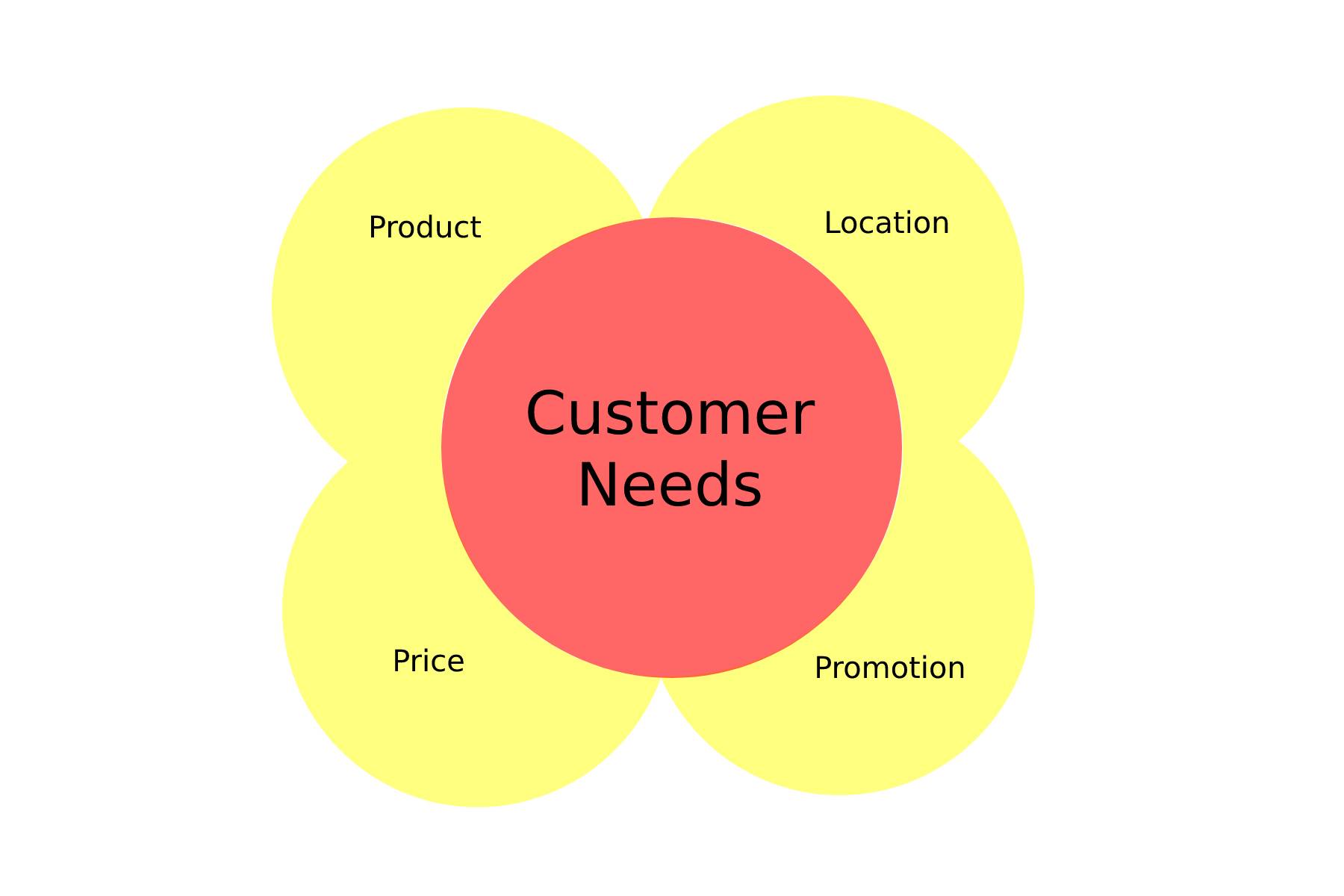
5. Make small improvements
It is then important to continuously refine the digital strategy. To grow more and faster, you need to focus on:
1. Finding or developing a differentiated product that drives meaningful outcomes for your customers. Otherwise, investments in marketing will not deliver the desired result.
2. Change your mindset and develop a go-to-market strategy that acknowledges the current reality of how buying happens today.
3. Communicate to your market where they already spend time and develop a compelling message that they will come to you when they are ready to buy.
4. Make it easy to learn more about your product and make it even easier to buy it.
5. Drive results for your customers as quickly as possible and maintain the ability to continuously deliver a great experience and reliable outcomes.
In the next chapter I will show you how to do this effectively.
Set up a digital strategy for your store
Now that we have explained the 5 phases, we will draw up a practical plan for the physical store.
- Know what your customer wants
- Know your value and get the basics in place
- Know where your customer is spending time online
- Define the goals of your digital strategy
- Set up the customer journey
- Be able to measure the touch points
- Draft the perfect messages
- Make an action plan and do it
We already briefly discussed these points in the previous chapter, but now we will deal with the practical implementation.
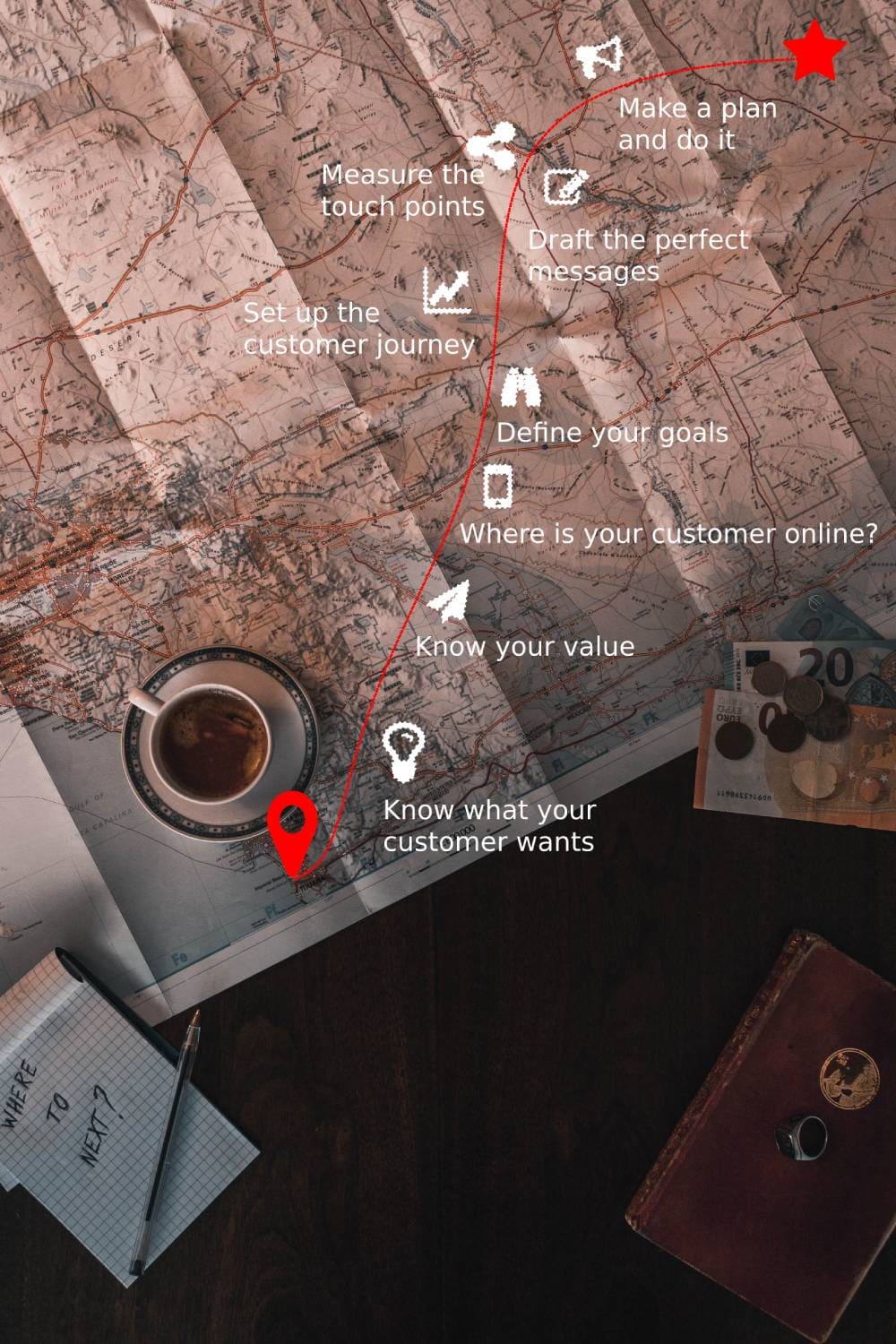
1. Know what your customer wants
Many companies struggle to make a real difference to their customers. That’s because it’s hard to figure out what the customer really wants. You can of course collect information with a survey. However, sometimes it turns out that it is not always a need that the target group is really willing to pay for. Therefore in order to find out what people really want, it is important to determine how they are currently doing something and why it is happening that way. Then try to find ways to make this easier and better for them.
2. Know your value and get the basics in place
Yes, you need to know why you are doing what you are doing and how it is making a difference for the customer. Define what the value is of your company and your product. This is important to draft the perfect message in step 7.
Then make sure you will have the basics into place:
- Have a webshop connected to your cash register and show your stock automatically online.
- Create free accounts on all Social Media platforms.
- Make sure it will be easier to collect customer data (in your CRM and on your website).
- Make sure you can send newsletters.
3. Know where your customer is spending time online
If your target audience is young people up to the age of 20, Tiktok is probably more interesting than Facebook. If you mainly have business customers, LinkedIn may be more interesting. So try to paint a clear picture of where the target audience spends their time online.
4. Define the goals of your digital strategy
Setting up goals using the SMART formula will help you stay on the right path. Your goal should be Specific, Measurable, Attainable, Relevant and Timed. So for example: I want to reach 30% of the target audience (Specific) 3 times (Measurable) by the end of the year (Time). This goal should also be attainable and relevant as well, so it must fit within the possibilities and be relevant to the ultimate goal.
5. Set up the customer journey
Make a list of all the touch points the customer is having before making a decision. For example, customer is looking for inspiration on how to match jewelry, customer is passing the store and customer is comparing product features. You can easily write down 40 of these crucial moments. Then try to make a difference in these moments by providing advice and information.
6. Measure the touch points
Make sure you can measure these contact moments. For example, that 10 people have compared a specific product or that 3 people have requested a quote. It is not always necessary to measure all points, because before you know it you are busier with this than with delivering value. However, by gaining more insight into this, you can improve the customer experience. You will start seeing what works and what doesn’t.
7. Draft the perfect messages
As you see most of the steps of the digital strategy for a retail store are quite theoretical. It is mainly a lot of research before you really get started. Of course you will learn more when taking steps. So now finally we get to the fun part where we can create the message. Check out this practical step-by-step approach how to create content as a retailer.
8. Make an action plan and do it
Now list your goals from step 4 and see what needs to be done to achieve them. Do you need to create a website for this? Do you already have accounts on Social Media and do you have the right tools? The content plan of step 7 also contains an action plan to place the content on all channels.
Advanced: tips for a good future proof retail strategy
Finally, we look at interesting possibilities if these basics are in order. The most important thing is to strengthen the bond with the customer. For example, offering the customer a free after sales moment with a purchase. In this way you create another touch point towards the target audience. An intensified collaboration with suppliers, an online proposition and high expertise in the store are other factors that can make the difference. Therefore, the expertise of the staff will be very important in the coming years.
The DNA of a successful retailer contains the feeling for his unique formula, skills to work together and entrepreneurship. The retailer seizes the opportunities that can only be enforced through a well-automated system, namely:
- Sell space instead of products
- Help others (suppliers) sell
1. Sell space instead of products
In this article on inventory optimization , we’ve talked about reducing inventory before. An interesting option for this is to outsource stock management to your supplier. You then make agreements with the representative about the maximum value and, for example, payment arrangements. In this way you will save extra time and money.
This is only possible if you use a transparent store system, where you can give the supplier real-time insight into your stock and sales of the relevant brand with one click. In this way, the representative can actively contribute ideas at any time. If something is sold, it can be replenished immediately. Is a product in stock for too long? Then the representative can exchange it or help sell it out. This saves you a lot of time when purchasing and you always have a complete range in the store. Moreover, you never go over the maximum stock and you always have the most important collections in the store.
This is also interesting for your sales representative, because his hours of driving can be better invested. He can make suggestions to improve your stock at any time from his own workplace. So the question does not become “Which product sells well?” but “How much turnover can you (the supplier) realize with how many m2?” By providing real-time insight, you give the supplier more responsibility and the opportunity to positively influence this result.
2. Help others sell
You have built up a good customer base over the years. Thanks to technology, many new possibilities have arisen to approach these customers at the right time and to stay in touch during the customer journey.
That is why it is important as a retailer to collect as much customer data as possible. This is the new gold in the digital society. You become the representative of these customers (that are in your system) in relation to millions of products that are available (online). With the internet, the offer is very transparent. So it’s all about how much you know about the customer in order to give them the best advice and present the product that best suits that person.
Your power with a physical store lies in bringing together offline and online. Above all, this improvement in the customer experience is beneficial because it enables new revenue. The combination and synchronization of in-store, online and mobile experiences can increase the loyalty of existing customers and attract new customers. Shopping becomes an experience by offering new services; from Augmented Reality fitting rooms to narrowcasting personal offers.
In the ideal situation, the consumer is offered a personal customer experience. For example, by sending tailored discounts directly to his or her phone, personalizing offers on digital screens as the customer approaches, or using an app to offer the customer the opportunity to easily look up more information about a product.

Bring your shop to the next level
Hi, I'm George and I like retail and technology. Therefore, my passion here at Retailgear.com is to provide you with reliable information to automate and digitize your store. You can find out what we can do for your industry through our menu. Also, feel free to check out this updated list of retail tools.
Get inspiration in your inbox to get more sales and store visitors with less effort.
Contact Us
Share this post:
More about your favorite subject
Discover latest posts






